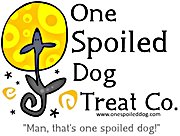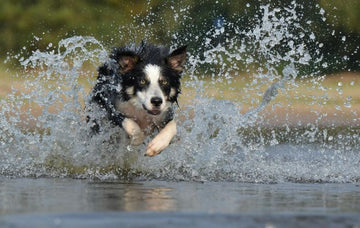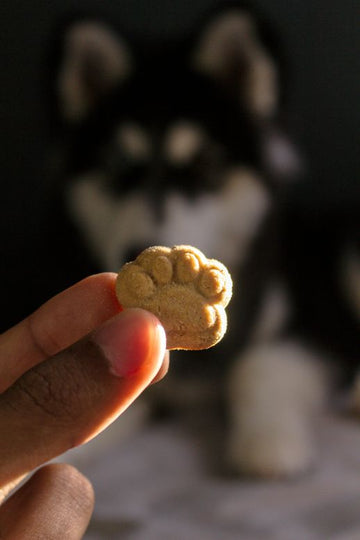Behavioral challenges are a natural part of dog ownership, but they can be frustrating for both you and your furry companion. The good news is that treats, when used strategically, are a powerful tool to correct these issues. From excessive barking to leash pulling, treats can help shape your dog's behavior through positive reinforcement, making your bond stronger and your home more harmonious.
In this guide, we’ll explore how to effectively use treats to address common behavior problems in dogs and create lasting positive changes.
Why Use Treats for Behavior Training?
Treats are a highly effective motivator for dogs. Here’s why they work so well:
- Immediate Gratification: Dogs live in the moment, so treats provide instant reinforcement for desired behaviors.
- Clear Communication: Treats act as a tangible reward, helping your dog quickly understand what actions are encouraged.
- Bond Building: Training with treats fosters trust and strengthens your connection with your dog.
When paired with consistency and patience, treat-based training is one of the most effective ways to address unwanted behaviors.
Addressing Common Behavior Issues with Treats
1. Excessive Barking
Dogs bark for reasons such as excitement, boredom, or alerting to potential threats. While barking is natural, excessive barking can become disruptive.
How to Use Treats:
- Identify Triggers: Pay attention to what causes your dog to bark—doorbells, visitors, or other animals.
- Teach the “Quiet” Command:
- Allow your dog to bark a few times.
- Say “quiet” in a calm, firm voice.
- When your dog stops barking, even for a moment, immediately reward them with a treat and praise.
- Repeat this consistently to reinforce the behavior.
2. Jumping on People
Jumping is often a sign of excitement or a way for dogs to seek attention. While it’s endearing in puppies, it can become a problem as your dog grows larger.
How to Use Treats:
- Reinforce Sitting Behavior:
- When your dog jumps, turn away and avoid giving them attention.
- Ask them to “sit” before engaging with them.
- Once they sit, reward them with a treat and praise.
- Ensure guests follow the same protocol to avoid mixed signals.
3. Leash Pulling
Leash pulling can turn walks into a frustrating experience. Teaching your dog to walk calmly on a leash is key to enjoyable outings.
How to Use Treats:
- Encourage Loose-Leash Walking:
- Hold treats at your dog’s nose level to keep their focus on you.
- Reward your dog with a treat every few steps they walk without pulling.
- If your dog pulls, stop walking immediately. Resume only when they return to your side.
- Gradually increase the distance they must walk calmly before earning a treat.
4. Chewing on Furniture or Shoes
Chewing is a natural behavior, but when directed at furniture or shoes, it can be destructive.
How to Use Treats:
- Provide Appropriate Alternatives:
- Offer durable chew toys or bones.
- When your dog uses the toy instead of inappropriate items, reward them with a treat and praise.
- Teach the “Leave It” Command:
- Hold a treat in your closed hand and say “leave it.”
- When your dog stops trying to get the treat and looks away, reward them from your other hand.
- Apply this command to items you want them to avoid chewing.
5. Separation Anxiety
Separation anxiety can lead to destructive behavior, excessive barking, or house soiling when you’re away.
How to Use Treats:
- Create Positive Associations:
- Before leaving, give your dog a special treat or puzzle toy filled with peanut butter or kibble.
- Reserve this treat or toy exclusively for times when you’re not home.
- Reward Calm Behavior:
- Start with short departures and gradually increase the time you’re away.
- When you return, reward your dog with a treat if they remained calm.
Tips for Effective Treat-Based Training
-
Choose High-Value Treats:
Use treats that your dog finds especially enticing, like cheese, chicken, or freeze-dried liver. -
Reward Immediately:
Timing is crucial. Reward your dog as soon as they perform the desired behavior to ensure they make the connection. -
Use Small Portions:
Treats should be small and easy to consume to prevent overfeeding and keep training sessions efficient. -
Pair Treats with Praise:
Combine treats with verbal affirmations like “good dog!” or physical affection to reinforce the behavior further. -
Gradually Phase Out Treats:
Once your dog consistently performs the behavior, begin replacing treats with praise or play to prevent treat dependence.
Common Mistakes to Avoid
-
Rewarding at the Wrong Time:
Delayed rewards can confuse your dog about which behavior is being reinforced. Always reward immediately. -
Overusing Treats:
Avoid using treats as bribes. Your dog should perform the behavior first, and the treat should follow as a reward. -
Ignoring Consistency:
Inconsistent training can lead to mixed signals and slower progress. Be consistent in your commands and rewards.
Conclusion
Treats are a versatile and effective tool for addressing common behavior issues in dogs. By using treats strategically, you can redirect undesirable actions, reinforce positive behaviors, and create a stronger bond with your pet.
Patience and consistency are key. With time, effort, and the right rewards, you can transform challenging behaviors into positive habits, ensuring a happier and more harmonious life with your furry friend.




